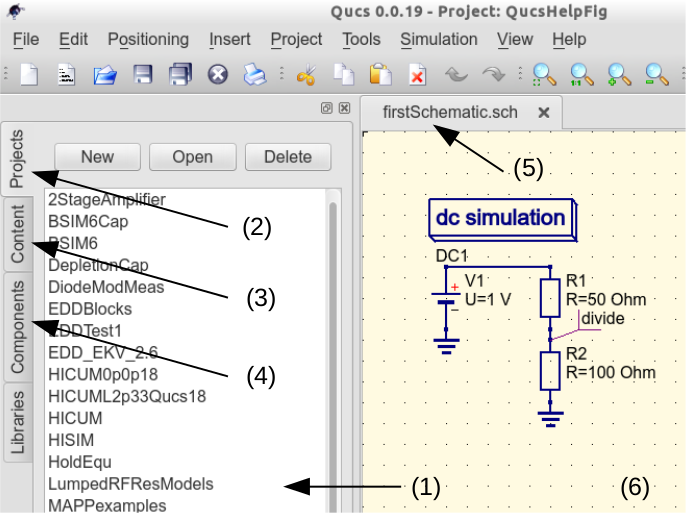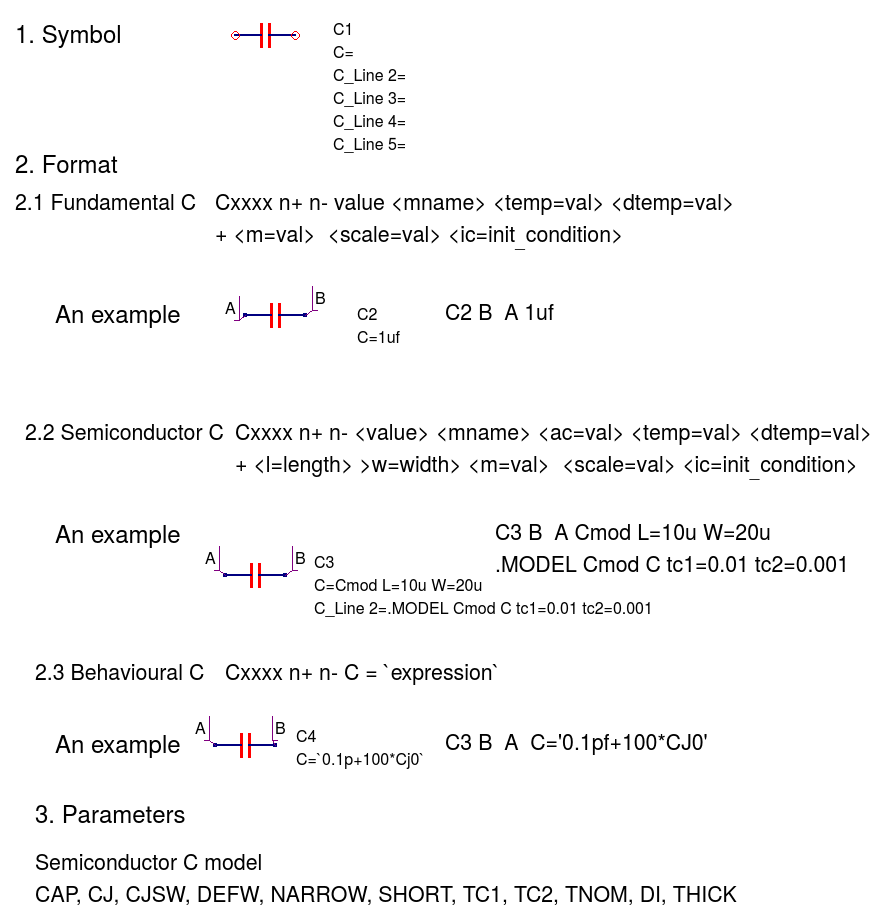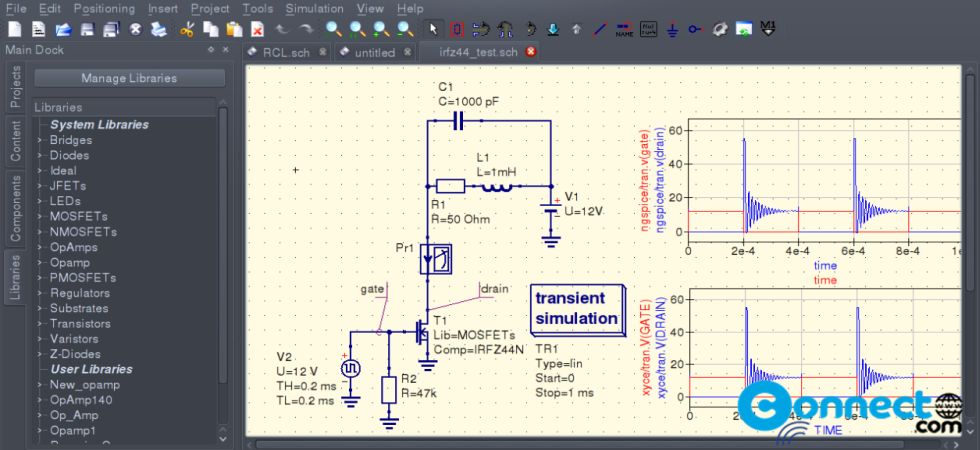

#QUCS SWITCH SIMULATION OFFLINE#
The approach was simulated using popular offline simulators (i.e., Pr, CW circuit, and virtual mode, EWB, Mu, P, Ye, TS, QUCS, LTS, SI, and PhET). This paper reveals the voltage divider circuit to better understand the fundamental working principles in detail. INDEX TERMS Laser communication, leakage detection, Sustainable Development Goals (SDGs), temperature sensors, underground water pipeline. Furthermore, a laser communication system was built to allow for the transmission of an alarm signal from the sensing node above the underground pipeline to a master node which should have an internet connection to upload information to a cloud storage which can be accessed by different users.

The results of the heat flow simulation developed with FEMM (Finite Element Method Magnetics) 4.2, which is free, open source, cross-platform capable of solving heat flow problems, showed that the addition of the insulation is expected to increase the difference between the readings of the sensors from 0.011 to 0.063 K ( The proposed system detects water leakages by comparing the readings of two analog active temperature sensors, one at the surface at a depth of 2 cm of a sand layer covering a buried water pipeline and the other is adjacent to the first sensor at the same depth in a thermally insulated portion by a polystyrene barrier. In this paper, a novel low-cost leakage detection system composed of two analog active temperature sensors is presented. Among the most popular technologies are infrared cameras, distributed temperature sensing using fiber optic cables, and analog active temperature sensors. The change in the temperature of an underground water pipeline and its surrounding environment caused by a leakage has been detected by a variety of devices. To illustrate the new Qucs-S modelling techniques an XSPICE version of the EPFL EKV v2.6 long channel transistor model together with other illustrative examples are described and their performance simulated with Qucs-S and Ngspice. This paper is concerned with recent advances in Qucs-S/Ngspice/XSPICE modelling capabilities that improve model construction and simulation run time performance of Equation-Defined Devices using XSPICE model syntheses. Moreover, Equation-Defined Devices often promote a clearer understanding of the factors involved in the construction of complex compact semiconductor simulation models.


It's inherent interactive properties make it ideal for device and circuit modelling via Qucs schematics. Today, this component has become an established element for building experimental device simulation models. The Qucs Equation-Defined Device was introduce roughly ten years ago as a versatile behavioural simulation component for modelling the non-linear static and dynamic properties of passive components, semiconductor devices and IC macromodels.


 0 kommentar(er)
0 kommentar(er)
